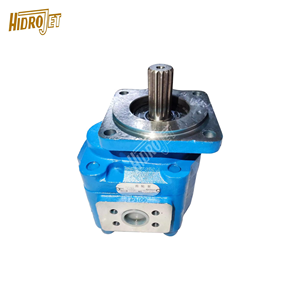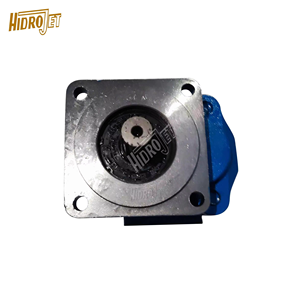(2173 products available)
































































































































































































The B series oil pump has several features that make it stand out as a top choice for many engines. For starters, it has a larger oil capacity that allows it to store more oil. This ensures a constant supply of oil to critical engine components, allowing them to function smoothly. In addition, the B series oil pump has a higher flow rate, meaning it can pump oil faster than other pumps. This ensures that oil reaches even the most distant engine parts quickly, reducing friction and wear. As a result, the overall life of the engine is prolonged.
The B series oil pump also incorporates advanced technology such as internal gears and rotors. These components work together to create a more efficient pumping action, ensuring a steady and reliable oil flow. Furthermore, the B series oil pump is designed with precision to minimize tolerances between its components. This reduces the internal leakage of pumped oil and further enhances the efficiency of the pump.
B-series 1.5 oil pump
The B-series 1.5 oil pump is a common choice for many vehicles because of its reliability, compact design, and high oil flow rates. It has a flow rate of 90 liters per minute, which is sufficient for most engines. In addition, the B-series 1.5 oil pump has a pressure relief valve and a pressure regulation valve that ensure stable oil pressure and flow. The pressure relief valve protects the oil pump from damage due to high pressure, while the pressure regulation valve maintains a constant pressure in the oil pipeline.
B-series 1.6 oil pump
The B-series 1.6 oil pump is a commonly used oil pump in many B-series engines. The B-series 1.6 oil pump has a flow rate of 100 liters per minute and a pressure rating of 5 bars. This means it can deliver oil to engine parts at a faster rate and higher pressure than the B-series 1.5 oil pump. In addition, the B-series 1.6 oil pump is equipped with an anti-drain back valve and a suction valve. The anti-drain back valve prevents the backflow of oil when the pump is not working, while the suction valve controls the flow of oil into the pump.
B-series 1.8 oil pump
The B-series 1.8 oil pump is a high-performance oil pump designed for high-performance or modified engines. It has a flow rate of 110 liters per minute and a pressure rating of 6 bars. This allows the B-series 1.8 oil pump to provide a larger and more stable oil supply to critical engine components, reducing friction and wear even further. In addition, the B-series 1.8 oil pump uses high-quality materials and advanced manufacturing processes. This enhances the durability and reliability of the pump, ensuring it can withstand the demands of high-performance driving.
The B-series oil pump is one of the most popular oil pumps used in vehicles. It has a higher flow rate than the stock oil pump. The B-series oil pump has a flow rate of 55 gallons per minute (GPM) at 10 psi. The pressure is the same as the stock oil pump. The B-series oil pump has a higher flow rate than the standard oil pump, which makes it ideal for high-performance engines.
Like any other oil pump, the B-series oil pump requires regular maintenance to avoid wear and tear. Here are some tips on how to maintain the B-series oil pump.
Regular oil changes:
Changing the oil regularly is one of the easiest ways to maintain the B-series oil pump. When the engine oil is dirty, it puts a strain on the oil pump. The debris and particles in the dirty engine oil obstruct the flow and increase the pump's workload. This may cause the pump to wear out faster. To be on the safe side, change the engine oil every 5,000 miles.
Use the right viscosity oil:
The viscosity of the engine oil affects the performance of the B-series oil pump. Use the manufacturer's recommended oil viscosity to keep the pump in good condition. Avoid using oil with a viscosity that is too low or too high, as it may affect the oil pump's ability to lubricate the engine.
Regularly check the oil level:
Maintaining the proper oil level in the engine is also important for the B-series oil pump. Before starting the car, check the engine oil level using the dipstick. If the oil level is below the recommended level, top it up before starting the engine. Running the engine with low oil puts undue stress on the oil pump and may cause it to fail.
Before buying, it is important to know how to choose the right B-series oil pump for the intended purpose. Here are some tips to help make the choice easier.
Consider the Engine's Requirements
When selecting the B-series oil pump, ensure it is compatible with the intended engine. Consider the engine's specifications, such as its size and power output. For high-performance engines, choose oil pumps that offer higher oil flow and pressure. This ensures optimal lubrication, especially when the engine is under heavy load.
Evaluate the Oil Pump's Specifications
Take time and closely scrutinize the oil pump's specifications. Focus on the oil flow rate and pressure rating. The flow rate indicates how much oil the pump can move within a given time. On the other hand, the pressure rating shows the force with which the pump can push oil through the engine. For optimal engine performance, choose oil pumps with higher flow rates and pressure ratings.
Assess the Quality and Reliability
For a quality oil pump, the source of the oil pump is crucial. Buy the oil pump from reputable brands. Such brands are known for the quality and reliability of their products. Additionally, consider the materials and construction of the oil pump. Choose oil pumps that are made of durable materials. This ensures the oil pump can withstand the pressure and flow requirements of the engine.
Compatibility with Oil Viscosity
Consider the viscosity of the oil to be used in the engine. Ensure that the B-series oil pump is compatible with the specified oil viscosity. Pumps are designed to work with specific oil viscosities. This ensures optimal performance and lubrication.
Installation and Fitment
Consider the ease of installation and fitment of the oil pump. Select the B-series oil pump that is designed for easy installation in the intended engine. Additionally, choose oil pumps that come with all the necessary fittings and adapters. This saves time and reduces the cost of buying additional components.
Warranty and Support
Consider the warranty offered by the manufacturer or supplier of the oil pump. Choose oil pumps that come with a reasonable warranty period. This provides protection against any defects or issues. Additionally, consider the level of customer support available. Choose suppliers that offer reliable customer support in case of inquiries or assistance.
Cost and Value for Money
Lastly, consider the cost of the B-series oil pump. Compare prices from different suppliers and manufacturers. However, do not compromise on quality and performance. Seek the oil pump that offers the best value for money.
As the B-series oil pump is used in many Honda vehicles, it is essential to know the steps to replace the oil pump. The process is almost the same regardless of the oil pump used.
First, gather all the necessary tools for the work.
With the right tools and parts, the process becomes easy. Drivers must remember to use Honda's recommended oil for the engine. Follow the steps below to replace the oil pump:
Q1: What is an oil pump?
A1: An oil pump is a mechanical device whose main purpose is to pump oil around the engine of a vehicle. The circulated oil lubricates the engine parts to minimize friction and reduce wear and tear, preventing overheating. The oil pump b series ensures there is proper engine performance and durability.
Q2: What is the B series pump?
A2: The B series pump refers to the B series engine, which is a common platform for many engines. The B-series engine is a part of the Honda B-series engines that were launched in 1988. The B-series oil pump is designed for the B-series engine. The B-series pump uses a rotary vane pump to pump oil through the engine and maintain the oil pressure. The B-series pump is known for its reliability and durability.
Q3: What is the b series oil pump gear ratio?
A3: The b series oil pump gear ratio is the relationship between the number of teeth on the gears of the oil pump. The gear ratio influences the flow rate and pressure of the oil pumped through the engine. For most B-series engines, the oil pump has a gear ratio of 1:1. The gears of the oil pump are usually customized according to the requirements of the B-series engines.
Q4: Why is the oil pump important in a vehicle?
A4: The oil pump is important in a vehicle because it ensures there is proper lubrication and oil circulation in the engine. Without the oil pump, the engine can quickly get damaged due to friction and overheating.
Q5: How do people know there is a problem with the oil pump?
A5: The first telltale sign of a problem with the oil pump is the Oil Change Required alert on the dashboard. Other indicators include unusual noises from the engine, visible engine smoke, or a leaking engine oil.